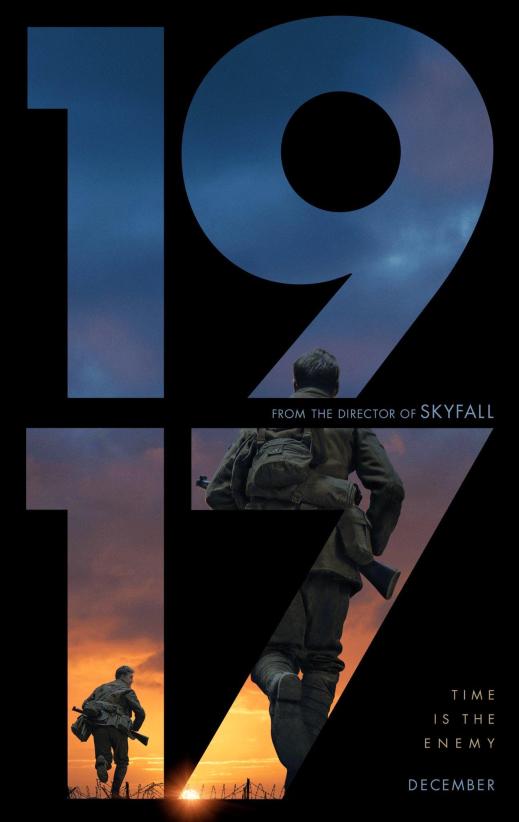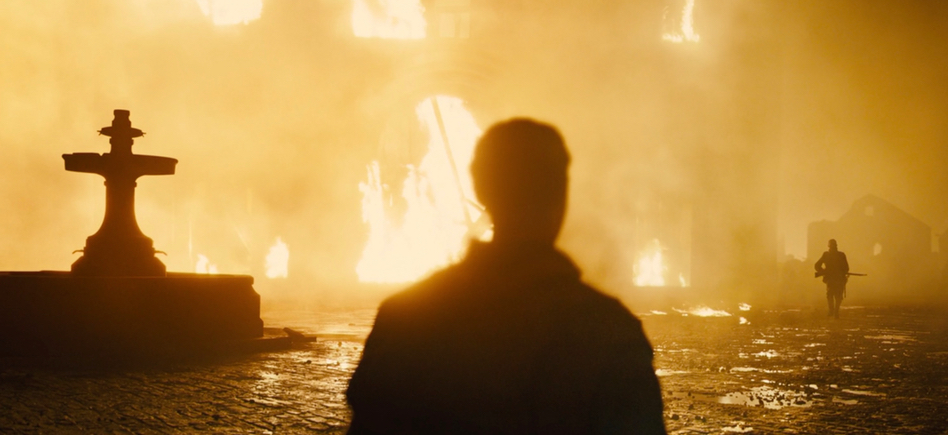
With nearly every film released in IMAX, there’s always a countdown to get everyone excited for what they’re about to experience. Before the countdown, we see words flashing before our very eyes one word at a time:
Prepare.
To.
Believe.
And even then, I was still unprepared.
I’ve been a moviegoer for almost my entire lifetime. I thought I had seen everything that needed to be seen on a big screen. Surely, the movies can’t offer as many surprises as the latest streaming services available to you for just $6.99/month.
That was before I experienced 1917 for the very first time.
You know why 1917 and 2001 have the same amount of numbers in their titles? Because they’re both the greatest films in cinematic history, that’s why. Both films push the medium forward in crazy, imaginative, and unexpected ways that some forms of art could never hope to accomplish. Nor should they even try. When breaking ground and entering new territory, the moving image can remind you of its captivating power.
I felt like I’d experienced something brand new with 1917. Or maybe it’s just a combination of similar feelings I had felt with other movies in the past that ultimately became something I had never experienced before. I don’t even want to think about that right now. What Sam Mendes, Roger Deakins, Thomas Newman, and the rest of the film’s incredibly gifted storytellers have accomplished here is unlike anything I’ve seen before in my lifetime of going to the movies.
I’m not going to give away where the first “cut” of the film happens, but contrary to what other people have been saying regarding Mendes’ vision of the film simulating one long shot, there are technically two “cuts” in the film. That’s not a criticism. If anything, it feels more like a play in two acts through a cinematic lens, and considering Mendes’ theatrical background, that comes as no surprise (sadly, there’s no intermission; I mean, for God’s sake, that would have been necessary considering how tense I was throughout the first half).
Again, not a criticism, because how it’s done here is nothing short of extraordinary. When I heard that the film was simulated to feel like two long takes, I was skeptical just by watching the trailers, for they were edited to feel like a typical (yet interesting) war film. That was a genius move on the marketing department, because it made the film all the more surprising when finding out that, yes, this film was simulated to feel like two long takes. Even when researching that the film was created like that online, I was still unprepared for how mindblowing the experience was going to be.
I know Roger Deakins has an Oscar already for his work on Blade Runner 2049. After 1917, he needs about….sixty more? This is the third film where I’ve seen Roger Deakins’ awe-inspiring cinematography on an IMAX-sized screen (the first two being Skyfall and Blade Runner 2049), and honestly, we need to have a contract where his contributions are required to be in IMAX theatres with 26% more image than you would normally experience on a regular-sized screen. The level of detail just in the mud alone when the two soldiers are trudging through No Man’s Land was both amazing and terrifying all at once. And don’t get me started with this shot:

Imagine that plastered on an IMAX screen. You want to see the movie right now, don’t you?
And then you have Thomas Newman’s subtly brilliant score giving the film the atmosphere it requires. I’ve been an enormous fan of his work ever since I was first introduced to his compositions for Finding Nemo. The range of his work on 1917 astounded me, from the epic bombast found in the film’s most intense moments, to the subtle quietness felt in the film’s most reflective moments. My favorite piece of his work here is “The Night Window”, which combines the very best of what Newman has always offered in the past. It’s one of his greatest film scores to date, and should be considered for an Oscar.
Even with all of the technical aspects reaching a level of cinematic mastery, they all somehow still serve the story’s journey. Both George MacKay and Dean-Charles Chapman’s performances in this film represent the highest caliber of acting that I can think of, even if it wasn’t a film created in this nature. Despite being relatively unknown when compared to the likes of Colin Firth and Benedict Cumberbatch, I wouldn’t be surprised if they become big names after this film sends them to the big leagues. The emotional turmoil they have to express, the demanding physicality they have to endure–even as an aspiring actor, I probably wouldn’t have the bravery to venture on a project like this. Maybe when I’m braver and older.
Within the start of a new decade, there have been talks and rumors of yet another World War in our midst, and I couldn’t help but think about that while experiencing 1917. I don’t know what the future holds for our world, and I’m not going to even pretend to be an expert considering I haven’t ventured outside the right side of the United States my whole life, but if the timely message of this film is anything to come by, I truly believe the world would be a better place by making this film required viewing. This is yet another reminder that a world war would not only be pointless, but it would cause unnecessary emotional damage to families and friends that don’t deserve to feel this way.
Cast aside any awards hype, as well as the unnecessary, inevitable backlash that will ultimately follow, and experience the film the way it was meant to be intended. It will make you believe in the power of cinema again.